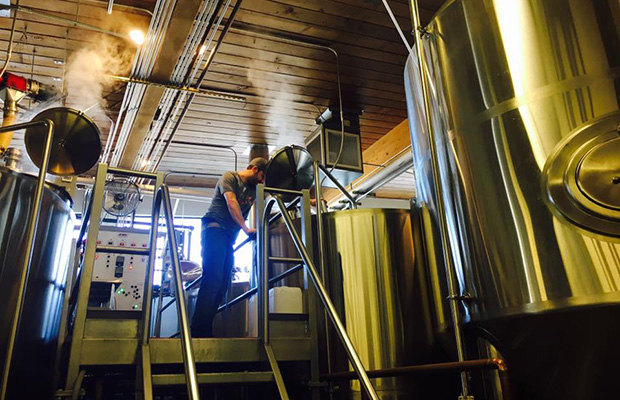
One strain of yeast can help produce barrels upon barrels of beer. Breweries are well known to use repitching as a way to help maximize cost efficiencies in brewing.
But in Houston, a yeast strain showed solidarity and made for a fun experiment.
In all, 23 breweries in the Houston area co-ordinated on what is being called the Houston Daisy Chain Experiment, led by Sam Wright of Southern Star Brewing. The project began early this year, reaching out to six generations.
“Numerous brewers and sales people have told me that they loved the idea, showing how the community can work together,” Wright said. “Many mentioned that it introduced them to people they hadn’t met before, and it helped to bring faces to names.
“It also connected people in that they had to work their schedule in conjunction with other breweries, and depend on each other to communicate how fermentation was going, and when their schedules lined up for yeast harvesting.”
Led by Southern Star, the project ended up with 23 participants, including, 8th Wonder, Eureka Heights, Copperhead, 11 Below, Sigma, Braman, Lone Pint, Town in City, Bearded Fox, Brash, No Label, BAKFISH, Texas Leaguer, Buffalo Bayou, Platypus, City Acre, Holler, Fetching Lab, Whole Foods Brewing, Spindletap, Blackwater Draw, and New Republic.
Southern Star used the first generation yeast from the Sam Adams Ale strain, also known as East Coast Ale strain. All of the participating breweries got yeast within six generations, the highest being for 8th Wonder’s second run through the strain, which is to be barrel aged.
“We [Southern Star] made a 60 barrels of an old-school American Pale Ale using Falconer’s Flight hops,” explained Wright. “We decided that since all the yeast was going to ultimately come from us, we needed to choose a style fairly light in alcohol and not overly hoppy to maximize yeast health for the whole project.”
Copperhead Brewery was one of the first three breweries to get a repitch from Southern Star’s original beer.
Seth Earnest said that he and his team brewed the brewery’s Copperhead Red Ale with it.
“Since it was going to take a few months before everyone participating had their brews ready and several local craft beer bars wanted events with all of the Daisy Chain beers on tap, I went with this more malt-focused brew instead of something hoppy,” Earnest said. “Plus the yeast strain selected provided an almost English type flavor profile at the warmer end of it’s temp range. Ended up working out nicely.”
Buffalo Bayou Brew used a third generation strain and made a Copper IPA with copious amounts of Simcoe.
“We made this beer after contemplating several styles, focusing on how the Daisy Chain yeast would complement those styles and vice versa,” noted the brewery’s Marketing Manager, Taylor Stephenson. ” Eventually, we decided that a heavily-hopped Copper IPA would stay true to the Buffalo Bayou form, but allow us to really utilize the HDC yeast to make a very delicious brew.”
BAKFISH Brewing used a fourth generation of the yeast for a double dry-hopped IPA deemed “Polarizer.”
“Since BAKFISH was the last stop for the yeast, we had some liberties with stressing the yeast and decided to attempt our first primary fermentation dry-hopped beer,” said Carson Cibulski, who does quality control for the brewery. “The additions of hops in primary fermentation makes for combined slurry of hop and yeast matter that shouldn’t be used to make another beer. A beer like this isn’t normally in our scope of practice, but we wanted to try something new for the Daisy Chain Experiment.”
Cibulski noted that a city-wide experiment like the Daisy Chain highlights the commitment that Houston brewers have to bringing a diverse craft scene to the city.
“We believe the Daisy Chain showcased that our network of breweries are willing to collaborate to create unique experiences for the customer and for the craft,” he said.
Copperhead had tap handle stickers made with the Daisy Chain logo on it. They also did something a little different and bottled 50 cases of the beer as well, as most of the batches were draft-only releases.
“Overall, this project was really fun to be part of,” Earnest said. “The support and events planned around these beers has been absolutely great. The brewers and breweries are all friends in the Houston beer scene. We always help each other out when needed. I think that’s how it will always be. That’s why this project was successful.”
Some of the breweries couldn’t fit a large-batch of the beer into their production schedule, but they were able to make a test batch to serve only at their taprooms.
“We hope that next year we’ll have more breweries participate, seeing how well the first year went,” Wright said. “My goal is to have all of the craft breweries in the greater Houston area get involved.”






Be the first to comment